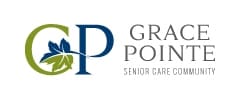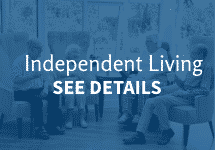As the veteran population ages and the need for long-term care increases, understanding how to access and utilize the Veterans Aid and Attendance program’s earned benefits is essential. This blog post provides a comprehensive overview of the program – who is eligible, what services are covered, how to apply, and how the benefits can be used to reduce assisted living costs.
What is the Veterans Aid and Attendance Program?
The Veterans Aid and Attendance program is run by the Department of Veterans Affairs (VA) to provide financial assistance for veterans and surviving spouses who need regular aid and attendance. It is designed to help cover the costs of long-term care and assisted living for those who qualify.
The program provides a tax-free benefit paid in addition to the veteran’s pension to those who require assistance with activities of daily living such as bathing, dressing, eating, adjusting prosthetic devices, and protecting themselves from hazards of daily life. It allows veterans and surviving spouses to get the care they need either at home, in an assisted living facility, or in a nursing home.
The Aid and Attendance benefit is part of the Improved Pension program, which provides monthly benefit payments to wartime veterans who have limited income and require assistance. It can help pay for in-home care, assisted living, and nursing home care. The program has been available for decades but is still under-utilized by those who may qualify.
Who is Eligible for the Program?
Eligibility for the Aid and Attendance benefit hinges on service, health, and financial criteria:
- The veteran must have served at least 90 days of active duty with at least one day during a wartime period. Wartime periods include World War II, Korean War, Vietnam era, Gulf War, and any other period designated by Congress.
- The veteran must have received an honorable or general discharge.
- The veteran or surviving spouse must require assistance with at least two activities of daily living or be blind, in a nursing home, or have a serious injury.
- Income and asset limits apply, but they are higher than other VA pension programs. Many applicants still qualify even if assets exceed the limit.
How Does the Program Help Pay for Assisted Living?
The Veterans Aid and Attendance program provides tax-free monetary benefits to eligible veterans, surviving spouses, and dependents to help cover the costs of assisted living. The program aims to provide supplemental income to offset assisted living expenses like room and board, medication management, personal care, and other services required for activities of daily living.
Veterans Aid and Attendance benefits can be used to pay for care in a variety of settings, including assisted living facilities, nursing homes, adult day care centers, and at-home care with a home health aide. The benefits are paid directly to the care provider or the individual receiving care.
The program recognizes that the cost of assisted living can be a financial burden, especially for older veterans living on a fixed income. By providing a supplemental income source, Veterans Aid and Attendance makes assisted living more accessible and affordable for those who served our country. The tax-free monetary benefits help reduce out-of-pocket costs, covering a portion of monthly fees and expenses.
What Types of Care are Covered?
The Aid and Attendance benefit is flexible, accommodating a variety of long-term care settings to best meet the needs of veterans and their spouses. Whether at home, in an assisted living facility, or in a nursing home, this program provides financial support to ensure veterans receive the care they need in the most suitable environment. Here are the main types of care that the program supports:
In-Home Care
The program can pay for in-home services like help with activities of daily living (bathing, dressing, eating), homemaker services (shopping, cleaning, laundry), and health care assistance from skilled nurses and therapists. This allows veterans who need assistance to receive care in the comfort of their own home.
Assisted Living
The Aid and Attendance benefits can be used to pay for assisted living, which provides housing, meals, personal care, and health services in a residential setting. This is a great option for veterans who need more care than at-home services can provide but wish to live in a supportive community environment outside of a nursing home. The program helps cover the costs of assisted living so veterans have access to this type of care.
Nursing Homes
For veterans and surviving spouses who require skilled nursing services onsite 24/7, the program also covers the costs of nursing home care. Aid and Attendance provides financial assistance so eligible applicants can access nursing home services.
The Veterans Aid and Attendance program is flexible in the types of long-term care services it covers. Whether a veteran needs in-home care, assisted living, or nursing home care, this program can help provide benefits to reduce the costs of various services and settings.
Application Process
Applying for the Veterans Aid and Attendance program involves submitting an application and supporting documents to the VA. Here are the key steps:
- Obtain an application form (VA Form 21-526EZ) either online or from a local VA regional office. This form allows veterans and surviving spouses to apply for pension benefits.
- Gather the required supporting documentation which includes:
- Discharge papers (DD214 or equivalent) showing dates of service
- Medical evaluation from a physician
- Information on current medical expenses
- Net worth limitations documentation
- Income documentation
- Submit the completed application with all documentation to the VA Pension Management Center (PMC) that serves your state. Applications can be submitted online, by mail, or in person.
- The VA will review the application and notify the applicant if any additional information is needed.
- If approved, benefits are awarded effective the date the claim was received by the VA. The review and approval timeline can take several months depending on the VA workload.
- Benefits are paid monthly directly to the person receiving the care or to a designated assisted living facility.
For more help to understand and navigate all of the resources available to you, contact your local Colorado Veterans Affairs Office.
Benefit Amounts
The maximum benefit amount available through the Veterans Aid and Attendance program depends on whether the applicant is a veteran or a surviving spouse.
For veterans, the maximum benefit in 2024 is up to $2,300 per month for a single veteran, and up to $2,727 per month for a veteran with one dependent. The VA calculates the actual benefit amount based on the applicant’s financial situation, deducting countable income like Social Security payments. So the full amount is not guaranteed.
For surviving spouses of veterans, the maximum benefit is $1,478 per month in 2024. Again, the VA calculates the actual benefit based on the spouse’s income, so many receive less than the maximum amount.
In general, the more medical and care expenses a veteran or spouse has, the higher their benefit amount will be, up to the maximum. So those with greater care needs due to disability or assisted living costs will qualify for more aid. The VA looks at recurring medical expenses when calculating benefits.
The monetary benefit amounts increase slightly each year based on cost of living adjustments. Applicants should check with the VA annually to find out the latest maximum amounts available through the Veterans Aid and Attendance program.
Using Benefits for Assisted Living
The Veterans Aid and Attendance benefit can be extremely helpful for veterans and surviving spouses who need financial assistance to pay for assisted living. The monthly payment provided through the program is sent directly to the individual and can be used to cover a portion or potentially all of their assisted living fees.
Some key things to know about using the Aid and Attendance benefits for assisted living:
- The money can be applied directly to monthly rent and fees charged by the assisted living community. This may include charges for room and board, assistance with activities of daily living, meals, laundry, transportation, social activities, medication management, and more.
- Benefits are paid monthly, so they align well with covering ongoing assisted living costs. The regular payments can provide continuous assistance.
- Aid and Attendance funds do not have any restrictions on what types of assisted living services and supports they can be used for. This gives recipients flexibility in applying the money to the charges incurred at an assisted living residence.
- The benefit amount is determined based on financial need, so the program is designed to cover necessary assisted living services for eligible veterans and survivors. The money can help fill the gap between what a person can afford to pay each month and the total cost of assisted living.
- The payments can supplement Social Security, pensions, retirement savings, and other income to make assisted living affordable.
The Veterans Aid and Attendance program provides essential financial assistance to veterans and surviving spouses struggling to pay the ongoing costs of assisted living. Using the monthly benefits for assisted living fees can greatly improve access and affordability.
Combining with Other Benefits
The Veterans Aid and Attendance program can be combined with other benefits and insurance policies to help reduce out-of-pocket costs for assisted living. One of the most common combinations is with long-term care insurance.
Long-term care insurance policies often cover a portion of assisted living costs. The Veterans Aid and Attendance program can then help fill in the gaps not covered by the insurance, making assisted living much more affordable for eligible veterans and their spouses.
For example, if a long-term care policy covers $3,000 per month towards assisted living, but the total monthly cost is $5,000, the Veterans Aid and Attendance benefit could potentially cover the remaining $2,000. This significantly reduces the out-of-pocket expenses.
Combining these two benefits allows veterans and their spouses to receive comprehensive assisted living services that may otherwise be unaffordable. It provides peace of mind knowing that costs are covered between insurance and Veterans Affairs. Discussing these options with a financial advisor can help maximize benefits and minimize personal costs.
The key is that Veterans Aid and Attendance is very flexible and can supplement other insurance or benefits.
This makes it a great program for filling coverage gaps and making assisted living accessible and affordable. Taking advantage of these combinations is something eligible veterans and spouses should strongly consider.
Want to ensure you’re getting access to all the benefits you earned? Contact your local Colorado Veterans Affairs Office as well as the Patient Aligned Care Team. They can help you navigate the application process and optimize your benefits.
Frequently Asked Questions About Assisted Living for Veterans
Do veterans have to pay to live in a veterans home?
Veterans may be required to pay for a portion of their stay in a veterans home, depending on their income, service-connected disability, and the specific policies of the facility. However, many costs can be offset by VA benefits designed to assist with long-term care expenses.
How much will the VA pay for assisted living?
The amount the VA pays for assisted living varies based on the veteran’s individual benefits, their financial situation, and specific needs. The Aid and Attendance benefit, for example, provides an additional monthly payment that can be used towards covering assisted living costs.
What types of assisted living services are available for veterans?
Assisted living for veterans can include a variety of services such as help with daily living activities, medication management, recreational activities, and more. Facilities may also offer specialized programs tailored to veterans with specific health or mobility issues.
What VA benefits are available for assisted living?
Veterans may be eligible for benefits such as the VA Aid and Attendance benefit, which provides additional monthly payments to help cover the cost of assisted living. Other benefits may include health care services, disability compensation, and more, depending on the veteran’s eligibility and service history.









